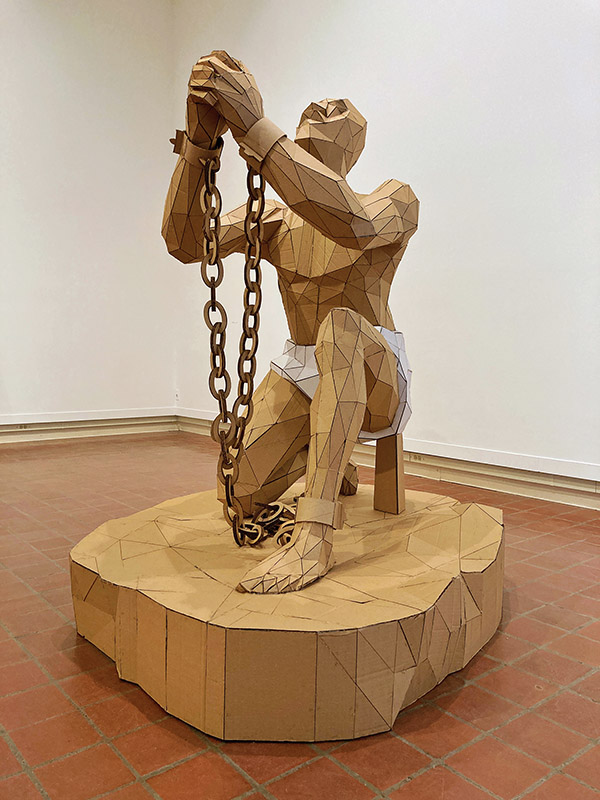Roberto Visani: Form/Reform
Brattleboro Museum and Art Center • Brattleboro, VT • brattleboromuseum.org • Through June 12, 2022

This prescient, powerful exhibit is installed in the Wolf Kahn and Emily Mason Gallery, as well as on the Stage. The historical referents are key in relation to the Black Lives Matter movement and bring the viewer back in time to when slavery was an established fact of life in the U.S. as well as other places in the world, and reminds us of the continuing implications for people of color and for society.
Sculptor Roberto Visani researches art historical depictions of enslaved people, and through the use of digital modeling and laser-cut cardboard segments, constructs a contemporary reinterpretation of a well-known predecessor. Visani also offers these for sale as cardboard slave kits that can be assembled with a hot glue gun. He sees these as an invitation to be part of the creation in the manner of Joseph Beuys’ “social sculpture.”
Because of the blend of representation and abstraction, they are even more mesmerizing. Cardboard slave kit, abolitionist blend 2020, is based on the seal of the Society for Effecting the Abolition of the Slave Trade created in 1787. The sculpture of the enchained, kneeling African man beseeching us “Am I not a Man and a Brother” is haunting.
Each form stands out in a constantly changing silhouette against the wide, white walls, punctuated by sparsely spaced drawings in antique frames. Cardboard slave kit, bussa blend 2021, is based on the Emancipation Statue, a public sculpture located on Barbados. Bussa is the slave who helped inspire a revolt against slavery on the island in 1816. It is displayed on the central stage and its stance is even more powerful than the original.
Cardboard slave kit, carpeaux blend 2021, is based on Pourquoi! Naitre Esclave! (Why! Born Enslaved!), created by Jean-Baptiste Carpeaux in 1868. The portrait bust with her full head of hair and determined, resistant look was originally conceived as an allegory of Africa, and seems to be saying “born into slavery, but not reduced to slavery!” Visani has created sculpture that is absolutely unique—and even more powerful because of its potent evocation of the past relating to the present.
—B. Amore
